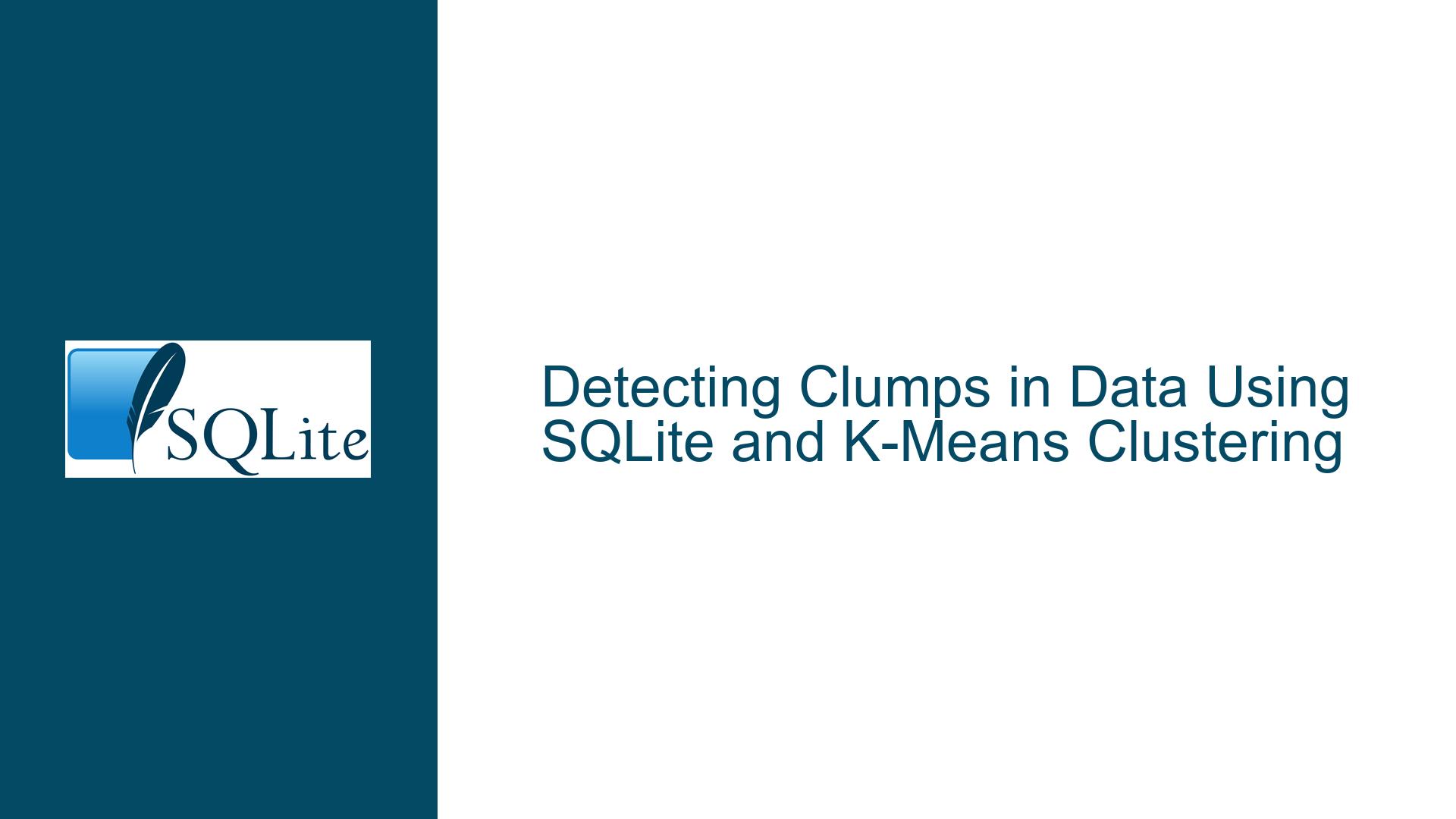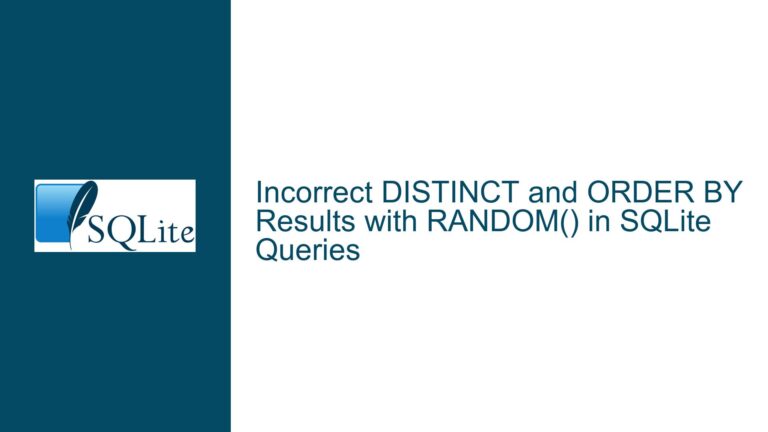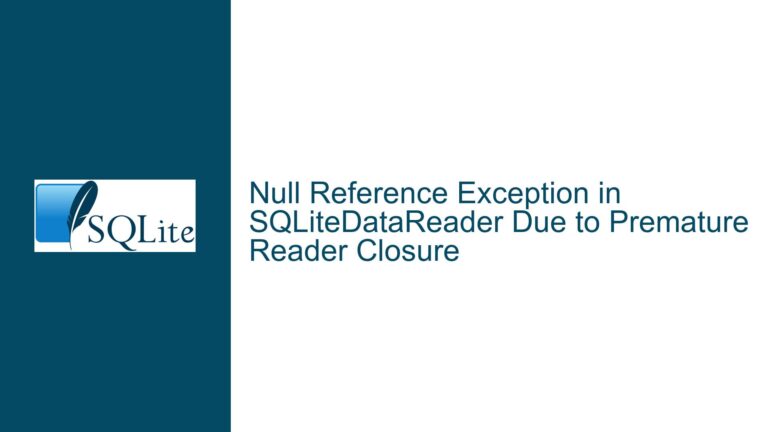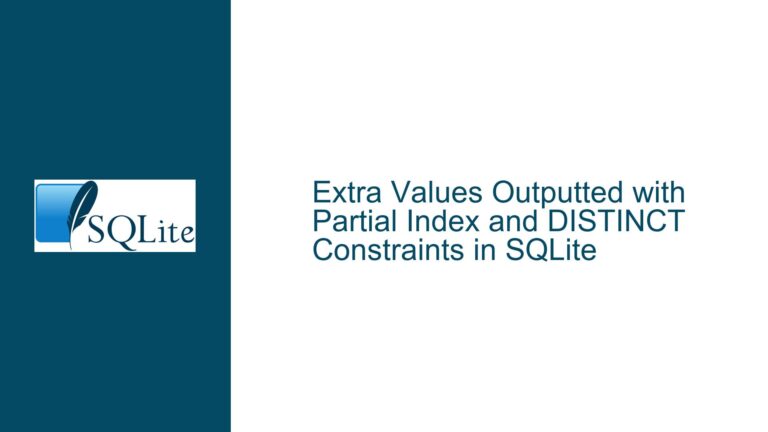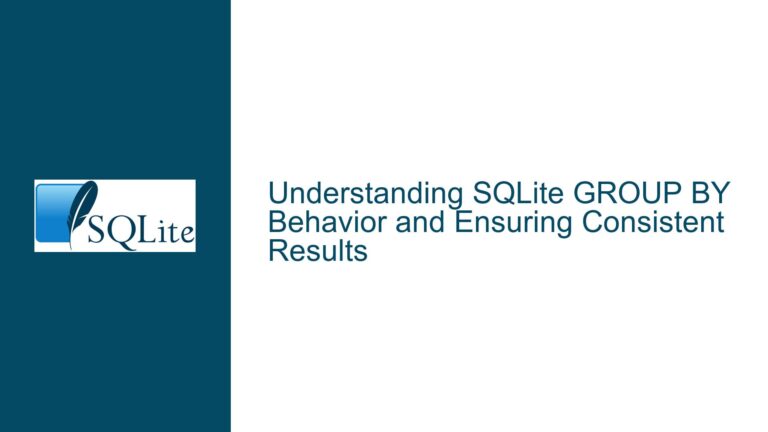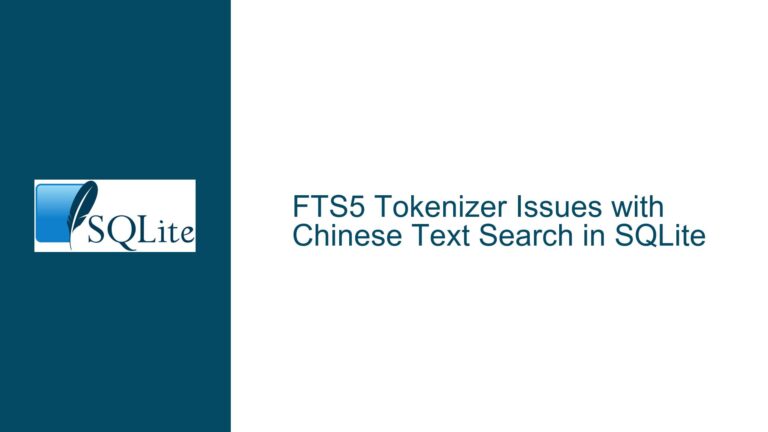Detecting Clumps in Data Using SQLite and K-Means Clustering
Understanding Clump Detection in Grading and Logfile Analysis
Clump detection, also referred to as edge detection or clustering, is a technique used to identify natural groupings or clusters within a dataset. In the context of grading, clump detection can be used to assign grades based on the distribution of scores, such as grouping scores into A, B, C, etc., based on natural breaks in the data. Similarly, in logfile analysis, clump detection can help identify patterns or anomalies by grouping log entries based on timestamps or other attributes.
The challenge lies in implementing this technique using SQLite, a lightweight database that lacks built-in support for advanced statistical or machine learning algorithms. However, with careful schema design and SQL query optimization, it is possible to approximate clump detection using SQLite’s capabilities. The core of this approach involves leveraging the k-means clustering algorithm, a popular unsupervised machine learning technique for partitioning data into k clusters.
K-means clustering works by iteratively assigning data points to the nearest cluster centroid and then updating the centroids based on the mean of the assigned points. This process continues until the centroids stabilize, indicating that the clusters have been optimally defined. While k-means is computationally intensive and NP-hard, it can be implemented in SQLite using recursive common table expressions (CTEs) and window functions.
Challenges in Implementing K-Means Clustering in SQLite
Implementing k-means clustering in SQLite presents several challenges. First, SQLite does not natively support advanced statistical functions or machine learning algorithms, requiring the use of SQL queries to approximate these operations. Second, the iterative nature of k-means clustering requires multiple passes over the data, which can be inefficient in a database environment. Third, the choice of initial centroids can significantly impact the final clustering results, making it crucial to select appropriate starting points.
In the provided example, the user attempts to implement k-means clustering using SQLite by creating a sample table to store the data and a centers table to store the cluster centroids. The initial centroids are selected using the ntile() window function, which divides the data into k groups based on their values. The centroids are then updated iteratively by calculating the mean of the values assigned to each cluster.
However, this approach has limitations. The use of ntile() for initial centroid selection may not always yield optimal results, especially if the data is not uniformly distributed. Additionally, the iterative update process relies on complex SQL queries with nested subqueries and window functions, which can be difficult to debug and optimize. Finally, the algorithm may converge to suboptimal clusters if the initial centroids are poorly chosen or if the data contains outliers.
Optimizing K-Means Clustering in SQLite with Recursive CTEs and Histograms
To address these challenges, the k-means clustering algorithm can be optimized using recursive CTEs and histogram-based techniques. Recursive CTEs allow for iterative processing within a single SQL query, eliminating the need for multiple passes over the data. Histograms provide a way to approximate the distribution of the data, enabling more informed selection of initial centroids.
The following steps outline an optimized approach to implementing k-means clustering in SQLite:
Data Preparation: Create a table to store the dataset and a table to store the cluster centroids. Populate the dataset table with the values to be clustered.
Initial Centroid Selection: Use a histogram-based approach to select initial centroids. This involves dividing the data into bins and selecting the midpoint of each bin as a centroid. This ensures that the centroids are evenly distributed across the range of the data.
Cluster Assignment: Assign each data point to the nearest centroid using a distance metric, such as the absolute difference between the data point and the centroid. This can be achieved using a window function to rank the distances and select the nearest centroid for each data point.
Centroid Update: Calculate the mean of the values assigned to each cluster and update the centroids accordingly. This step is repeated iteratively until the centroids stabilize.
Convergence Check: Use a recursive CTE to repeat the cluster assignment and centroid update steps until no further changes occur in the centroids. This ensures that the algorithm converges to the optimal clusters.
The following SQL code demonstrates this optimized approach:
-- Step 1: Data Preparation
DROP TABLE IF EXISTS sample;
CREATE TABLE sample(name TEXT, val REAL);
INSERT INTO sample VALUES ('ten', 10), ('fifty', 50), ('fifty', 50), ('fifty', 50), ('fifty', 50), ('fifty', 50), ('hundred', 100), ('hundred', 101), ('hundred', 102), ('hundred', 103), ('hundred', 150), ('2hundred', 200), ('2hundred', 225), ('2hundred', 250), ('3hundred', 300);
-- Step 2: Initial Centroid Selection
DROP TABLE IF EXISTS centers;
CREATE TABLE centers (k INTEGER, center REAL);
WITH histogram AS (
SELECT MIN(val) + (MAX(val) - MIN(val)) * (ntile(4) OVER (ORDER BY val) - 1) / 4 AS center
FROM sample
GROUP BY ntile(4) OVER (ORDER BY val)
)
INSERT INTO centers (k, center)
SELECT row_number() OVER (ORDER BY center), center
FROM histogram;
-- Step 3: Cluster Assignment and Centroid Update
WITH RECURSIVE kmeans AS (
SELECT k, center, 0 AS iteration
FROM centers
UNION ALL
SELECT k, new_center, iteration + 1
FROM (
SELECT c.k, AVG(s.val) AS new_center
FROM sample s
JOIN (
SELECT s.val, c.k, ROW_NUMBER() OVER (PARTITION BY s.val ORDER BY ABS(s.val - c.center)) AS rn
FROM sample s, centers c
) AS nearest ON s.val = nearest.val AND nearest.rn = 1
JOIN centers c ON nearest.k = c.k
GROUP BY c.k
) AS updated_centers
WHERE iteration < 10 -- Limit iterations to prevent infinite loops
)
SELECT k, center
FROM kmeans
WHERE iteration = (SELECT MAX(iteration) FROM kmeans);
This optimized approach ensures that the k-means clustering algorithm is implemented efficiently in SQLite, providing a robust solution for clump detection in grading and logfile analysis. By leveraging recursive CTEs and histogram-based centroid selection, the algorithm converges more quickly and reliably, even with large datasets.
